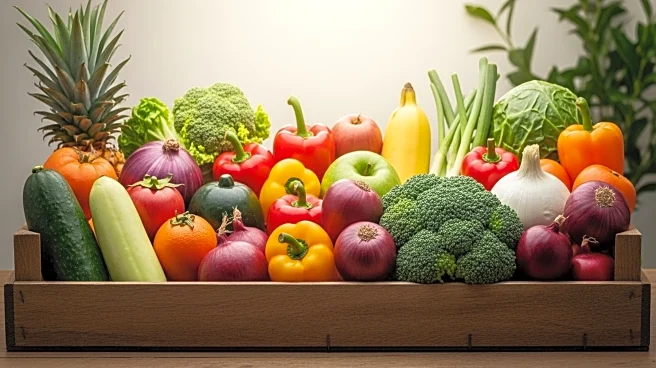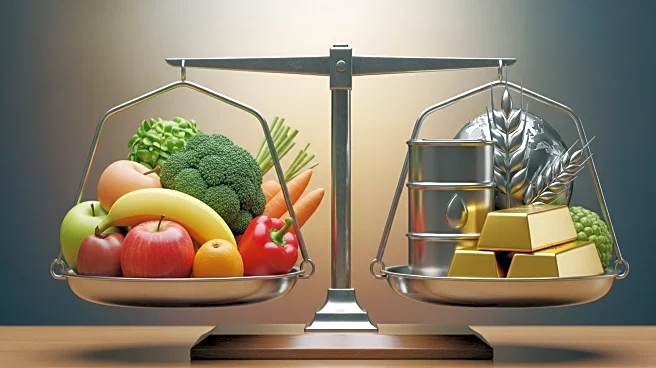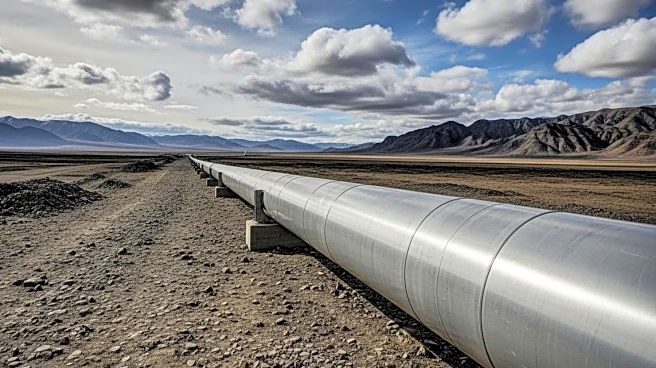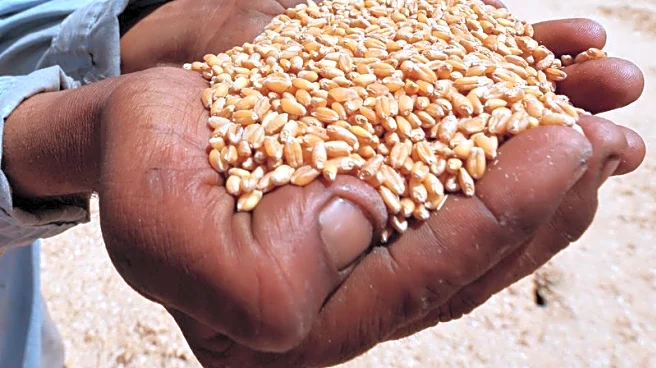What's Happening?
The Food and Agriculture Organization (FAO) of the United Nations has released its latest report indicating that global food commodity prices remained largely unchanged in August. The FAO Food Price Index averaged 130.1 points, slightly up from July's revised level of 130.0 points, marking a 6.9 percent increase from the previous year. The report highlights mixed trends across various commodities: vegetable oil prices rose by 1.4 percent, driven by increased palm, sunflower, and rapeseed oil quotations, while cereal prices declined by 0.8 percent due to larger wheat harvests in the European Union and Russia. Meat prices reached a new high, bolstered by strong demand in the U.S. and China, whereas dairy prices fell by 1.3 percent amid subdued import demand from Asia. Sugar prices saw a slight increase after months of decline, influenced by concerns over Brazilian sugarcane production.
Why It's Important?
The stability in global food prices is significant for international markets, particularly in the context of fluctuating commodity trends. The rise in vegetable oil prices could impact biodiesel production, especially with Indonesia's plans to increase its biodiesel blending mandate. The decline in cereal prices, particularly wheat, may benefit import-dependent countries, while the increase in meat prices could affect consumer costs in the U.S. and China. The mixed trends in dairy and sugar prices reflect broader market dynamics, including production challenges and import demands. These developments are crucial for policymakers and businesses involved in agriculture and food production, as they navigate supply chain adjustments and pricing strategies.
What's Next?
Looking ahead, the FAO forecasts a record high in global cereal production for 2025, driven by increased maize output in Brazil and the U.S. This could lead to expanded cereal stocks and a comfortable supply outlook globally. However, the rising prices of nitrogen fertilizers, as noted by the Agricultural Market Information System (AMIS), may impact crop yields and application rates, posing challenges for farmers. Stakeholders in agriculture will need to monitor these trends closely to adapt to potential shifts in supply and demand dynamics.
Beyond the Headlines
The report underscores the importance of sustainable agricultural practices and the need for innovation in crop production to address challenges such as fertilizer affordability. The interplay between commodity prices and environmental factors, like weather-driven yield changes, highlights the ongoing need for resilience in global food systems. As countries like Indonesia adjust their biodiesel mandates, the implications for energy markets and agricultural policies could be profound, necessitating strategic planning and international cooperation.













